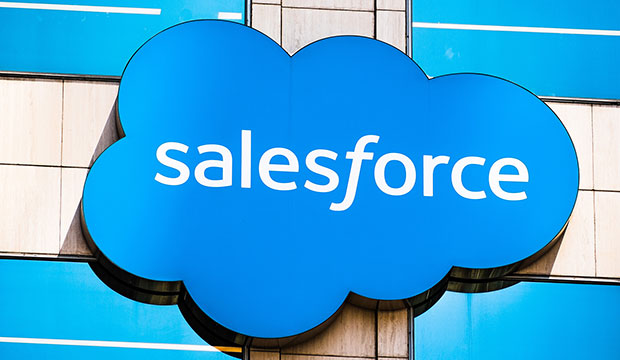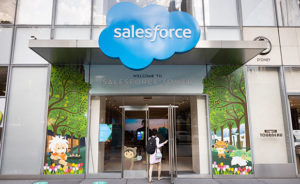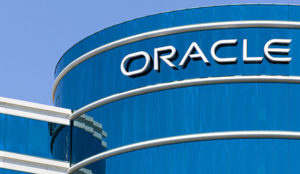I was at a Salesforce analyst briefing the other day. Most of it was under NDA but I had an insight that many of you may have already had and I want to share it.
I’ve been writing about the importance of platform as a tool and as a strategy for a while, and not only with regard to Salesforce — though they have one of the more pronounced strategies for platform which goes well beyond CRM. I’d say most CRM vendors have a platform story; others like Oracle and Zoho come up as examples all the time.
The difference with Salesforce is that it’s looking beyond the platform to what it does, not only for its customers but also for the company’s own positioning. It reminds me of the situation 20 years ago when what would become cloud computing was launching.
There were lots of CRM vendors dipping a toe in the water then, but most were treating cloud as just another delivery mechanism and early monikers for the industry reveal as much. We called it on-demand, software as a service, and other things. Salesforce was happy to apply the term to itself too though my impression was that they thought more of it than a simple delivery mechanism.
At the time there wasn’t a lot to distinguish on-premises products like Siebel and PeopleSoft, from SaaS products. Furthermore, Salesforce was largely a sales force automation company and others had more articulated products.
Still, the idea that you could do more for customers when delivering solutions through the cloud persisted beyond the financial advantages provided by subscriptions. The company continued developing its platform and, importantly, exposing it to customers.
Look Beyond the Platform
Today, platform is king and an important driver of the digital disruption. I’ve never been fond of the term though I use it because it’s nothing more than a description of an attribute but not the thing itself.
It’s wrapper. Like the label on a candy bar, it can tell you ingredients and calories or warn you about nut allergies, but it can’t tell you flavor, mouth feel or that elusive thing umami. For that you must experience the product.
If you go beyond the wrapper, and I hope you do whether you’re examining Salesforce, Zoho, Oracle or a hundred other products, you’ll discover that the most important thing isn’t the platform but how you use it.
What impressed me the other day is that Salesforce has developed a strategy in several parts that works equally well for its business as it does for its customers wrestling with digital disruption.
Here’s what I see…
DataThey often refer to legacy systems as systems of record. Simply put, a system of record captures and stores data and regurgitates it back if you ask a direct question. As it has branched out, Salesforce has become less interested in systems of record realizing they can build bridges to the data in place.
While that’s an inelegant solution, it gives the owners of legacy systems comfort knowing they aren’t throwing something away. But in truth, it’s a matter of time before systems of record get rolled into more modern systems of intelligence.
InformationThe purpose of having data is to be able to extract information from it, something that systems of record are poor at. Adding analytics, machine learning and other incisive solutions to systems of record enables users and managers to interrogate it to find new and interesting (and hopefully profitable) connections in the data to better manage.
But this still leaves us with the need to ask good questions and our research has shown that too many users stick with the pre-programmed reports that these systems come with rather than stepping out of the box to ask new things. Still, it’s progress.
EngagementThe pinnacle of this evolution — right now at least — is the system of engagement. Rather than waiting to be asked, a system of engagement will, to a degree, volunteer information to the user which can be ignored. That said, it’s becoming a hard conversation for a sales rep to have at the end of a quarter for ignoring advice about which deals are closest in.
Interestingly, this three-part development has proven true in the business world for Salesforce, but also in philanthropy (Philanthropy Cloud), healthcare (Health Cloud), sustainability (Sustainability Cloud) and much of whatever else the company goes after. That looks like the model that its customers glom onto as well.
Update Requirements
Now, all of this sits on the platform and the big reveal is that unless you have a platform what I’ve been talking about sounds like Greek 101. The platform is responsible for generating working code that integrates the data with workflow, analytics, machine learning, journey mapping and much more.
You can’t write all of that, especially if you have dreams of changing your system’s performance on the fly. My research shows that almost 20 percent of companies aim for being able to change their systems at least daily if not hourly, a sign of where we’re going.
So, especially today when so much of what we do with others happens through gloved hands and masks at the end of an internet connection, having all those systems contributing to your perception of the business environment becomes critical. One speaker on the Salesforce call admitted he was now closing deals with people he’d only met across the internet.
Hybrid Recovery?
The big question this raises is whether this will be the new normal. My thinking is that you must prepare for the proverbial dead cat bounce. It’s a Wall Street expression that, in graphic terms, says that anything will bounce or rebound if it falls from high enough. Often stocks do this after a steep decline — and no — you don’t make all your money back.
So what does this say about CRM and business? I expect that we’ll see some rebound of people returning to their offices albeit in smaller numbers. Parenthetically, work from home might improve once kids return to brick and mortar.
If you’re a CEO, there’s little comfort in this because you need to prepare for both a return to the office and continued working from home. The good news is that whatever you do with the right platform is likely to translate well into your digital disruption however you use it.














































